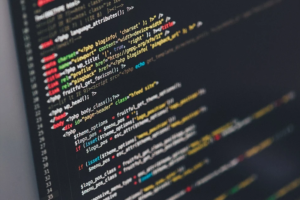Using AI and ML to combat the COVID-19 pandemic
 During an emergency the availability of information is critical for organized and effective response efforts. In combatting the current COVID-19 pandemic, data sharing is crucial to optimizing the quality of artificial intelligence (AI) and machine learning (ML) tools. AI and ML are being used by health professionals and emergency managers across the country to improve their COVID-19 response and recovery efforts. These tools allow officials to develop a proactive approach to the COVID-19 pandemic and help preserve public health.
During an emergency the availability of information is critical for organized and effective response efforts. In combatting the current COVID-19 pandemic, data sharing is crucial to optimizing the quality of artificial intelligence (AI) and machine learning (ML) tools. AI and ML are being used by health professionals and emergency managers across the country to improve their COVID-19 response and recovery efforts. These tools allow officials to develop a proactive approach to the COVID-19 pandemic and help preserve public health.
Currently, COVID-19 data is being collected by local, state, tribal, territorial and federal agencies as well as the private sector. However, information sharing efforts are stifled by ineffective data aggregation, making it difficult to quickly gather data critical to developing real-time ML tools such as syndromic surveillance systems. Another major challenge facing AI and ML development are privacy laws that prevent the sharing of specific data. While these challenges hinder the capabilities of AI and ML, emergency managers and public health officials are using these tools to prepare for and recognize hotspots as well as mitigate the impact of a local surge.
AI/ML tools can be used to identify hot spots through the monitoring of social media, public health data, and anonymized search engine inputs. By monitoring this data, AI tools could identify locations with increased cases and alert public health and emergency managers to respond to a surge before local resources are overwhelmed. IEM’s COVID-19 predictive AI modeling is used by emergency managers and public health officials at the local and state levels to understand the ramifications of the virus’ spread, better help prepare for surges in hospitalizations and personal protective equipment (PPE), and plan for testing needs. Analysis of the confirmed COVID-19 cases allows IEM to detect hot spots and resurgences in cases. With this information IEM has been able to recognize the top areas of the United States with the greatest increases in COVID-19 cases. The modeled data then translates into an operational response for emergency managers – enabling the ordering of PPE for frontline workers, revising public health guidance, and alerting local medical facilities.
AI also supports communication tools, alerting a community when someone who has tested positive enters an area, or when a localized surge requires more aggressive safety measures. Symptom tracking AI-based apps are being utilized to help individuals track their personal health, identify their risk of infection, and connect them to testing resources. Microsoft and United Health Group developed a free symptom screening app to help employees determine if they are safe to enter the work place. Users of the app must opt-in and consent to information sharing. To maintain privacy, the information shared is anonymized it will assist in the development of workforce trends and analytics that will power ML and inform work place and public health decisions.
Contact tracing is another focus for software developers. While contact tracing is traditionally achieved by a public health workforce conducting in-person and telephone interviews with individuals who have tested positive or had contact with someone who tested positive, AI-based mobile apps have the potential to accelerate and streamline the process. The mobile app is designed to be an asset to manual contact tracing efforts although countries around the world are struggling to collect users’ information without running into privacy issues. Countries such as Germany, Ireland, and France have rolled out contact tracing apps yet they are still primarily relying on manual contact tracing to drive efforts. The technology to carry out digital contact tracing is available. The challenge is developing a platform that users trust with their information and also provides officials with the information they need to combat the pandemic.
The COIVD-19 pandemic has forced emergency managers and public health officials to quickly adapt their AI and ML capabilities to preserve public health. Despite the challenges presented by poor data sharing and privacy laws, emergency managers and software developers have succeeded in utilizing technology to develop predictive modeling and contact tracing platforms. The pandemic has highlighted the need for real-time data sharing and generated a discussion on the ethical use of information. As data sharing improves and privacy guidelines are developed to facilitate ethical AI and ML practices, these tools will continue to improve response and public safety.
The future of emergency management and public health is data driven. AI and ML are helping save lives, as COVID-19 continues to threaten public health, innovative technologies will continue to be developed to improve public safety and prepare for future disasters. Technology will never replace essential personnel navigating a disaster or crises, but these tools allow them to more quickly analyze the enormous amounts of data available and inform decision making. AI and ML tools are aiding emergency managers to identify and prepare for the future needs of their communities and mitigate potential risk. AI and ML technologies are helping to preserve public health and monitor the progression of the pandemic while the world waits for a vaccine to be developed.
To learn more about how IEM is using AI and ML to combat the COVID-19 pandemic visit our COVID-19 resources page.




